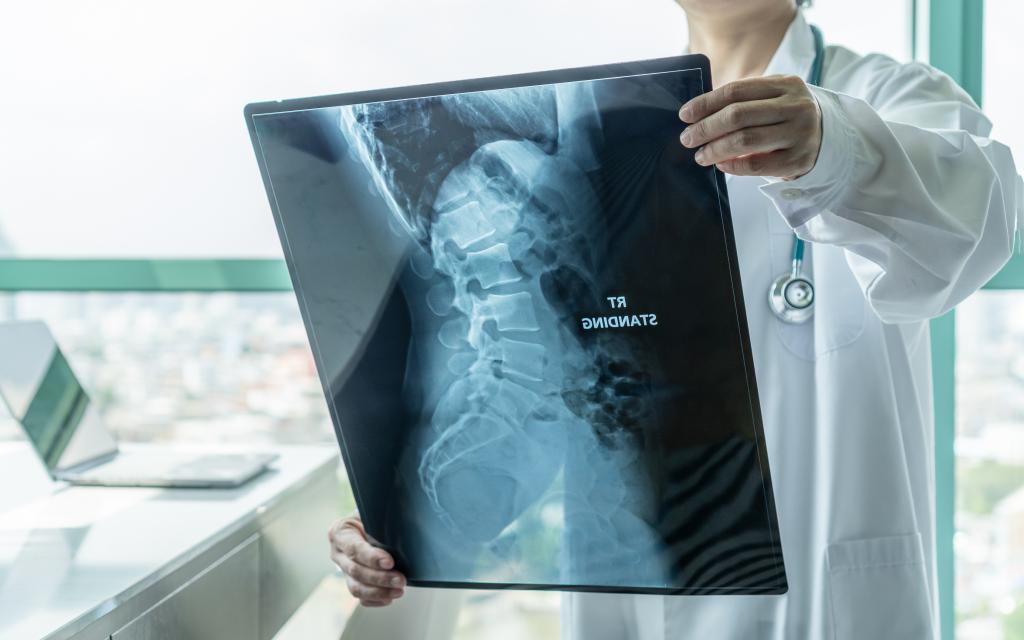When you’re a parent, there’s a lot to worry about. One of the biggest areas of concern is your child’s health. There are so many different developmental milestones to hit, illnesses to avoid, and medical conditions to be aware of. And some conditions, like spinal muscular atrophy, may not be common, but they can be frightening for parents.
Spinal muscular atrophy (SMA) affects a surprising number of children. According to Cure SMA¹, spinal muscular atrophy appears in one out of every 11,000 births. It can affect children of any race and gender, and it often strikes in the earliest years of life. Currently, SMA is the number one genetic cause of death in infants².
 Chinnapong / Shutterstock
Chinnapong / ShutterstockSMA is certainly a health condition that’s worth worrying about. But it’s also important to understand spinal muscular atrophy – if you know its causes, its symptoms, and how it’s treated, you’ll be prepared for anything.
What is Spinal Muscular Atrophy?
Spinal muscular atrophy affects infants and children. It’s a genetic condition, or an autosomal recessive disease, passed down to a child from the parents³. As Boston Children’s Hospital explains, this occurs most often when both parents carry the specific genetic mutation for SMA⁴.
When a baby or child develops SMA, it becomes difficult for the child to use muscles and motor function. According to WebMD⁵, SMA causes a breakdown of the brain and spinal cord nerve cells. As a result, the brain cannot send messages to control muscle movement. Over time, the child’s muscles atrophy, or shrink and weaken. And that can cause additional problems, like difficulty swallowing or breathing.
There are a few different types of SMA, and each type has different symptoms and a different effect on the body. Regardless of the type, there is currently no cure for the disease. Different treatment options may be able to improve a child’s symptoms and help extend their life, but researchers are still working on ways to fight or potentially cure SMA.
Signs and Symptoms
Children typically develop spinal muscular atrophy within the first six to 18 months of their life, Boston Children’s Hospital reports⁶. More severe types of SMA can have more obvious symptoms. Milder types can take a bit longer to discover and diagnose.
Additionally, the symptoms of SMA vary depending on which type a child has. Overall, your child might experience the following⁷:
- Muscle weakness.
- Less or decreased muscle tone.
- Limited mobility or movement.
- Delayed motor skills and milestones.
- Breathing problems.
- Difficulty eating or swallowing.
- Spontaneous tongue movements.
- Scoliosis.
Your child may experience different symptoms depending on what type of SMA they’re living with. The specific symptoms associated with each type are, according to WebMD⁸:
- Type 1: Muscle weakness is the most pronounced symptom. Children will struggle to support the head, sit without help, and may have arms and legs that flop.
- Type 2: Symptoms typically appear in the legs. Children may be able to sit and walk, but they may need help to do so.
- Type 3: Children can stand and walk without help, but struggle to run, climb stairs, or go from sitting to standing without help.
- Type 4: Symptoms include muscle weakness, muscle twitching, and difficulty breathing. These symptoms tend to appear in the upper body, but can also occur in the legs.
No matter which type of SMA a child might be diagnosed with, symptoms can vary greatly. Each case is unique, and it’s best to speak with a doctor if you’re concerned about changes in your child’s health.
Treating Spinal Muscular Atrophy
There is no cure for spinal muscular atrophy. Unfortunately, children and their families must try to treat the disease and its symptoms until research finds new alternatives or a potential cure.
According to WebMD⁹, currently only two FDA-approved medications can be used to treat SMA: nusinersen and onasemnogene abeparvovec-xioi. Both medications are types of gene therapy, and they target the genes that SMA affects to help the body generate a specific protein that’s needed to control muscle movement.
These types of gene therapy medications are injected, either into the spinal cord or the veins. Some require a series of doses over time and others are used just once for improvement. The success depends on a child’s specific type of SMA and how it’s affecting their muscles and motor function.
If your child is experiencing additional issues or symptoms as a result of SMA, doctors may recommend other treatment options to help them live comfortably. Additional treatments can help manage different symptoms and target different effects of SMA. These often include10:
- Breathing aids, like masks or mouthpieces, to help air get in and out of the lungs.
- Nutritional aids, like a feeding tube or visits with a nutritionist to ensure your child is getting proper nutrition even if they struggle to eat.
- Physical and occupational therapy, which can help build muscles, fine-tune motor skills, aid movement, and protect joints.
- Back braces, which can help straighten and protect the spine.
Ultimately, while spinal muscular atrophy can be a frightening condition for both parents and children, it can vary widely. Symptoms – and even the prognosis – can be different for each case of SMA. It’s important to understand whether or not your child might be at risk of developing SMA. And if they do develop this disease, there are ways to improve their comfort and treatment options for their symptoms.


